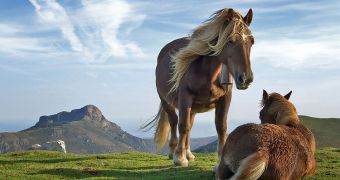Scientists from the University of Cambridge have recently managed to solve a long-standing mystery related to the evolution of domestic horses. The team was able to determine that the animals appeared on the steppes of the Ukraine and Russia, as well as in western Kazakhstan.
The origins of domestic horses have been under scientific debate for a very long time, with competing theories being pitted against each other, with the support of many investigations on each side.
What the new study revealed is that domestic horses mixed with local wild stocks at these three locations, shortly before and during their spread throughout Europe and Asia. The new study was funded by the BBSRC, German Academic Exchange Service (DAAD), and the Leverhulme Trust.
Details of the investigation were published in the May 7 issue of the esteemed journal Proceedings of the National Academy of Sciences (PNAS). For this research, the Cambridge team sampled genetic material from 300 horses living on the Eurasian steppe.
After running a number of different modeling scenarios, investigators determined that Equus ferus, the now-extinct wild ancestor of the domestic horse, originated in East Asia, and expanded out of that region starting about 160,000 years ago.
The animal was first domesticated when it reached the western Eurasian steppe. As the horses continued to spread westwards, their herds were constantly replenished with wild animals, which explains the inconsistencies that researchers found in the genetic data over the years.
“Our research clearly shows that the original founder population of domestic horses was established in the western Eurasian Steppe, an area where the earliest archaeological evidence for domesticated horses has been found,” EurekAlert quotes Dr. Vera Warmuth as saying.
The expert holds an appointment at the Cambridge Department of Zoology. “The spread of horse domestication differed from that of many other domestic animal species, in that spreading herds were augmented with local wild horses on an unprecedented scale,” she adds.
“If these restocking events involved mainly wild mares, we can explain the large number of female lineages in the domestic horse gene pool without having to invoke multiple domestication origins,” Warmuth concludes.

 14 DAY TRIAL //
14 DAY TRIAL //